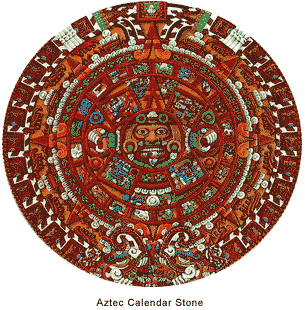The Aztecs were for centuries a poor nomadic tribe eking out a living in northern Mexico, but in the 12th century they relocated to central Mexico. Initially dependent upon neighboring groups, the Aztecs began to emerge as a power in the 14th century. Their capital of Tenochtitlán (later Mexico City) was created in an undesirable area of swamps and islands in 1325. The site was initially plagued by mosquitoes and sickness, but over time developed into a flower-festooned city of great beauty and vigor. Located in the middle of Lake Texcoco and accessible only by a few causeways, Tenochtitlán was easily defended. An era of great expansion accompanied this development. The Aztecs enriched themselves by taxing conquered peoples and created an empire that was a model of administrative regulation and control. By the time of the arrival of Spanish conquistador Hernán Cortés in 1519, the Aztecs dominated central Mexico and as far south as present-day Guatemala; their capital had swollen to more than 100,000 people.
 Through the processes of absorption and conquest, the Aztecs created a complex society that featured advanced agriculture, mathematics, astronomy and art. They were not the great innovators that their predecessors had been and borrowed heavily from the Mayans in particular. The Aztecs erected great stone pyramids capped by temples, the sites of human sacrifice rituals. Bloodshed became central to religious practice and in the late years it appears that more than 10,000 people were forfeited annually. The Spanish conquerors discovered some 100,000 human skulls in a single depository.
The question of how such a powerful empire collapsed so quickly and completely before the Spanish onslaught remains a topic of considerable debate. The invaders’ firepower, cunning and duplicity — plus the spread of infectious disease — are not sufficient answers. It has been suggested that the Aztecs were psychologically conditioned for defeat. Their religion fostered a cyclical view of history in which events were repeated in exacting detail in 52-year cycles until a great cataclysm at the end. Efforts were made by religious leaders to stem the inevitable by increasing the tide of human sacrifices. By the time the Spanish arrived, many of the Aztecs were emotionally spent.
Through the processes of absorption and conquest, the Aztecs created a complex society that featured advanced agriculture, mathematics, astronomy and art. They were not the great innovators that their predecessors had been and borrowed heavily from the Mayans in particular. The Aztecs erected great stone pyramids capped by temples, the sites of human sacrifice rituals. Bloodshed became central to religious practice and in the late years it appears that more than 10,000 people were forfeited annually. The Spanish conquerors discovered some 100,000 human skulls in a single depository.
The question of how such a powerful empire collapsed so quickly and completely before the Spanish onslaught remains a topic of considerable debate. The invaders’ firepower, cunning and duplicity — plus the spread of infectious disease — are not sufficient answers. It has been suggested that the Aztecs were psychologically conditioned for defeat. Their religion fostered a cyclical view of history in which events were repeated in exacting detail in 52-year cycles until a great cataclysm at the end. Efforts were made by religious leaders to stem the inevitable by increasing the tide of human sacrifices. By the time the Spanish arrived, many of the Aztecs were emotionally spent.